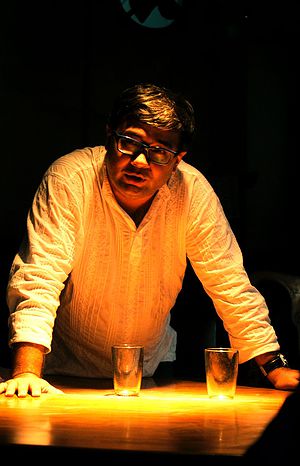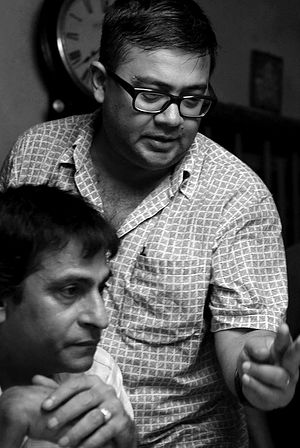THE FILM

Teenkahon (Three Obsessions) is a triptych film in Bengali by debutant filmmaker Bauddhayan Mukherji.
It is a rare international art house film from Bengal which, as a piece of social document, tries to capture the changing face of morality, the degeneration of values, the increasing pollution of the spoken language and the changing social fabric of Bengal through three stories.
Spread over a hundred years, the three stories are structured in the manner of the classical Three Act Play with each act (read story) exploring one facet of an obsessive relationship outside the purview of marriage.
ACT 1
The first film NABALOK (time period 1920-1954) is shot in black and white. This period piece is the story of an 8-year-old boy’s emotional attachment and obsession with a newly married girl. The film opens in Calcutta and then moves to rural Bengal.
ACT 2
The second film POST MORTEM (time period 1978) is a technicolor film. It is an ambitious single room drama about two men – the lover and the husband - of a woman who has ended her life the evening before. Through the dialogue between the two characters we see a third emerge and discover the frailties of each relationship and what role each man had in the woman’s suicide.
ACT 3
The third film TELEPHONE (time period 2013) is the modern age digital film. This Roald Dahl-esque story with a series of twists and turns looks into the darkness that looms beneath the surface of human beings and how manipulative human relationships have become.
THE STORIES

The first story NABALOK – The Innocent (time period 1920-1954) is shot in black and white. Written by Bibhutibhushan Mukhopadhyay, the film features Kharaj Mukherjee, the eminent director Suman Mukhopadhyay, Biswanath Bose, Manu Mukherjee and introduces Ananya Sen and Barshan Seal. This period film is the story of an 8-year-old boy’s emotional attachment and obsession about a newly married girl of the village. The film opens in Calcutta and then moves to rural Bengal.
The second story POST MORTEM (time period 1978) is a technicolor film. Written by Syed Mustafa Siraj this is set against the backdrop of the devastating floods of 1978. This film features Sabyasachi Chakraborty and Joy Sengupta and for the first time sees the 1978 floods been recreated on screen. Post Mortem is an ambitious single room drama about two men – the lover and the husband - of a woman who has ended her life the evening before. Through the dialogue between the two characters we see a third emerge and discover the frailties of each relationship and what role each man had in the woman’s suicide.
The third story TELEPHONE (time period 2013) is the modern age digital film. Written by the director Bauddhayan Mukherji, this features Rituparna Sengupta, Ashish Vidyarthi, Dhritiman Chaterji and Sumanta Mukherjee. This Roald Dahl-esque story with a series of twists and turns and looks into the darkness that looms beneath the surface of humanity and how manipulative human relationships have become. It is a film that captures the superficiality of modern day life and the emergence of the strong figure of the woman in Bengali society, through the lives of a police officer and his wife.